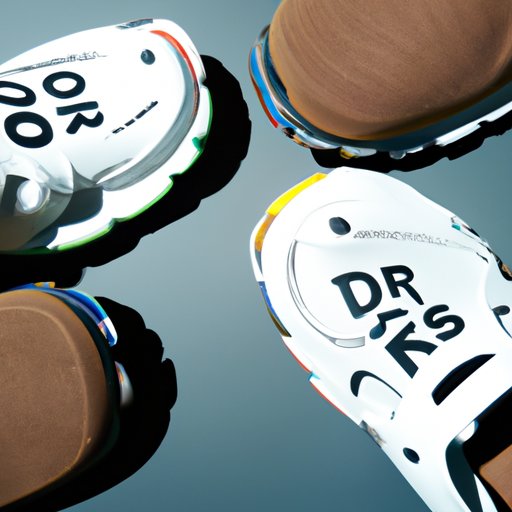Introduction
Diabetic shoes are designed to reduce the risk of developing foot ulcers and other complications associated with diabetes. For those who suffer from diabetes, wearing diabetic shoes can be an important part of their daily health and wellness routine. But does Medicare cover diabetic shoes? In this article, we explore the coverage and financial assistance options available for diabetic shoes under Medicare.

Overview of Medicare Coverage for Diabetic Shoes
Medicare Part B covers 80% of the cost of diabetic shoes and inserts (orthotics) when prescribed by a doctor or other qualified healthcare professional, such as a podiatrist or orthotist. To qualify for coverage, you must have diabetes and have been seen by a qualified foot care provider within the last 6 months. The coverage includes up to one pair of diabetic shoes and three sets of inserts per calendar year.
Benefits of Wearing Diabetic Shoes
Diabetic shoes are designed to provide extra support and cushioning to help protect your feet from injury and further complications due to diabetes. They are also designed to reduce pressure on the feet, which can help prevent the development of sores and ulcers. Wearing diabetic shoes can help improve circulation in your feet, improve balance and stability, and reduce fatigue. They can also help reduce the risk of falls and improve overall mobility.

Finding a Qualified Foot Care Provider
When it comes to finding a qualified foot care provider, the first step is to speak with your primary care physician or diabetes team. They will be able to recommend a qualified provider in your area. You can also search online for qualified providers in your area. It’s important to make sure that the provider you choose is qualified to prescribe diabetic shoes and inserts.
Tips for Finding the Right Fit
When it comes to finding the right fit for your diabetic shoes, it’s important to keep in mind that they should fit snugly but not too tight. Make sure to measure both feet before shopping for shoes, as most people have one foot that is larger than the other. Additionally, try on both shoes and walk around in them before making a purchase. This will help ensure that the shoes fit properly and provide the necessary support and comfort.
Financial Assistance Options
In addition to Medicare coverage, there are other financial assistance options available for those who need help paying for diabetic shoes. These include Medicaid, private insurance plans, and charitable organizations. If you don’t qualify for any of these options, you may be able to find discounted diabetic shoes online or at local shoe stores.

Medicare Coverage for Diabetic Shoes
Medicare Part B covers 80% of the cost of diabetic shoes and inserts (orthotics). To qualify for coverage, you must have diabetes and have been seen by a qualified foot care provider within the last 6 months. The coverage includes up to one pair of diabetic shoes and three sets of inserts per calendar year. Your out-of-pocket costs will depend on your Medicare plan and the type of shoes and inserts prescribed by your doctor.
Other Financial Assistance Options
If you don’t qualify for Medicare coverage, there are other financial assistance options available. These include Medicaid, private insurance plans, and charitable organizations. Additionally, you may be able to find discounted diabetic shoes online or at local shoe stores.
Common Questions about Medicare Coverage
Is Medicare coverage available for diabetic shoes? Yes, Medicare Part B covers 80% of the cost of diabetic shoes and inserts when prescribed by a doctor or other qualified healthcare professional.
What is the cost of diabetic shoes covered by Medicare? Your out-of-pocket cost will depend on your Medicare plan and the type of shoes and inserts prescribed by your doctor.
Are orthotics covered under Medicare? Yes, Medicare Part B covers 80% of the cost of orthotics when prescribed by a doctor or other qualified healthcare professional.
Conclusion
Diabetic shoes can be an important part of managing diabetes and reducing the risk of foot ulcers and other complications. Medicare Part B covers 80% of the cost of diabetic shoes and inserts when prescribed by a doctor or other qualified healthcare professional. There are also other financial assistance options available, including Medicaid, private insurance plans, and charitable organizations. When it comes to finding the right fit for your diabetic shoes, it’s important to measure both feet and try on both shoes before making a purchase.
(Note: Is this article not meeting your expectations? Do you have knowledge or insights to share? Unlock new opportunities and expand your reach by joining our authors team. Click Registration to join us and share your expertise with our readers.)
